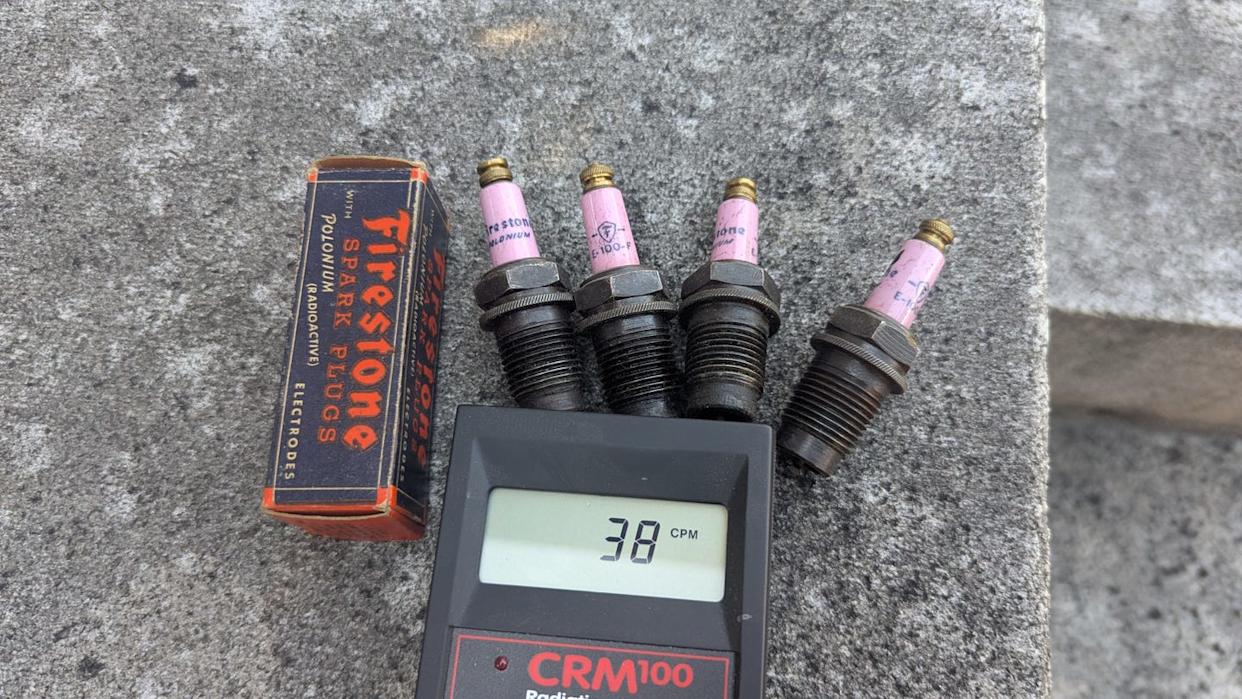
There have been many snake-oil automotive products over the years, promising to deliver better performance and fuel economy, and nearly all were based on science as shaky as that of the mythical 100-mpg carburetor.
When a Ford Model T-driving friend mentioned that he had a set of polonium spark plugs, I assumed they were products of the "radioactivity is magical" marketing craze of the early 20th century. I was wrong: These plugs were sold in the 1940s, and the theory behind them made a tiny bit of real-world sense.

The members of the Holdaway family have been Colorado/Utah gearhead legends for many generations. Their vehicle collection must number in the hundreds, including a whole fleet of Model Ts. This photograph of a few of those Ts in Moab may look like 1927, but it was shot a few months ago on an ancient Ansco box camera loaded with a 1950s Chinese copy of a 1940s Soviet copy of a 1930s German black-and-white film.

The 1923 T isn't a fast car, but it's still sturdy transportation at age 102. It could be a bit of a challenge to get one to start on a cold morning, though, what with the unpredictable fuel quality and hand-crank starter of the old days. Perhaps getting a stronger ignition spark would help!
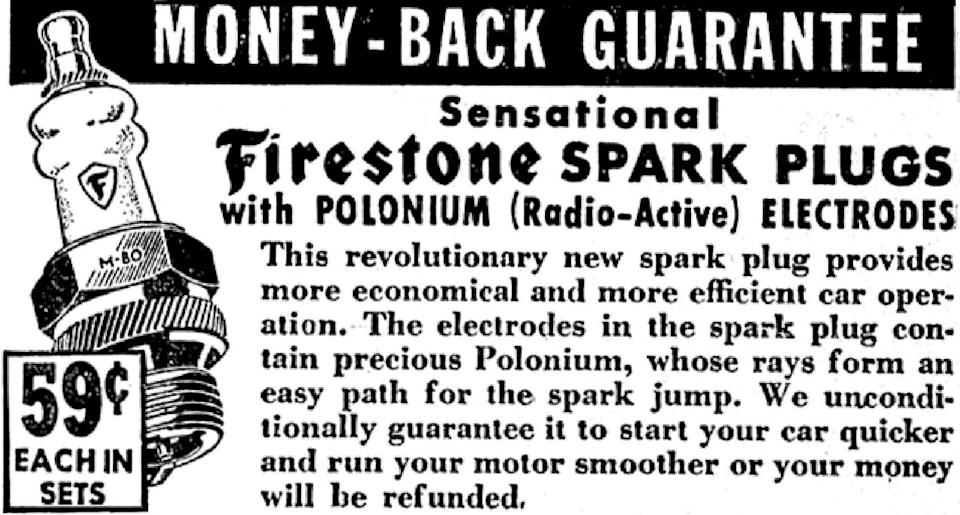
When you expose the atoms in the gases that form our atmosphere to a strong source of alpha particles, they become ionized and provide an easier path for an electrical spark.
Patents for the use of radium in spark plugs were filed in the United States during the 1920s, but it appears that radium spark plugs were never marketed (probably due to the huge media coverage of the terrible illnesses and deaths of the Radium Girls at the time).
Radium is a dangerous material for spark plugs, not only because it ends up in human bones and teeth when handled but also due to its hard-to-shield-against gamma-ray output.
The most common isotope of polonium, Po-210, is a powerful alpha emitter but its gamma rays are weak (you definitely don't want to ingest the stuff, but alpha particles are easily blocked).
Firestone took the idea of using polonium instead of radium as a substance to ionize the air inside a spark plug gap and ran with it starting around 1940, with genuine "Radio-Active" Po-210 electrodes in these spark plugs.
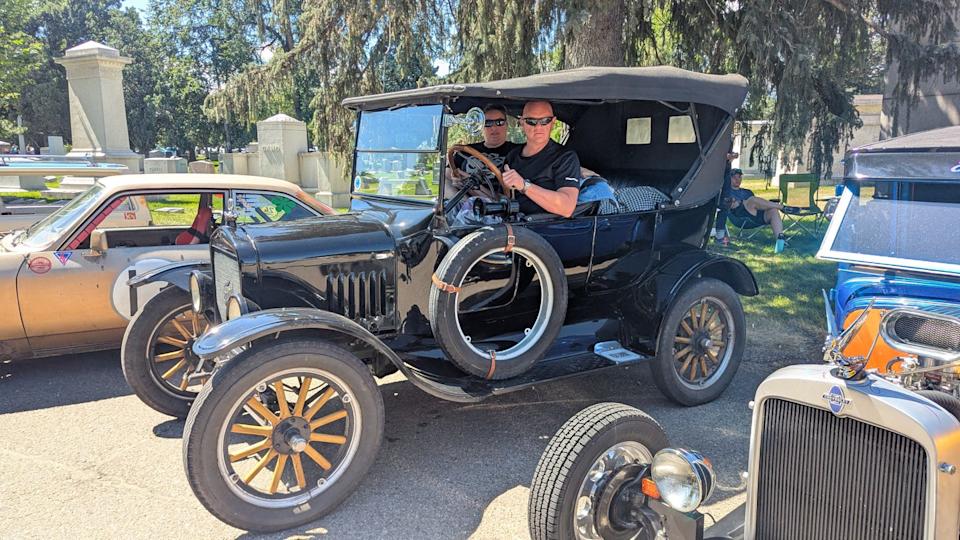
I had to see Firestone Polonium spark plugs for myself, so I met up with some Holdaways and one of their Ts at the big Fairmount Cemetery car show in Denver last weekend.

Naturally, I drove my chopped-and-slammed 1969 Toyota Corona coupe to the event, as one does.
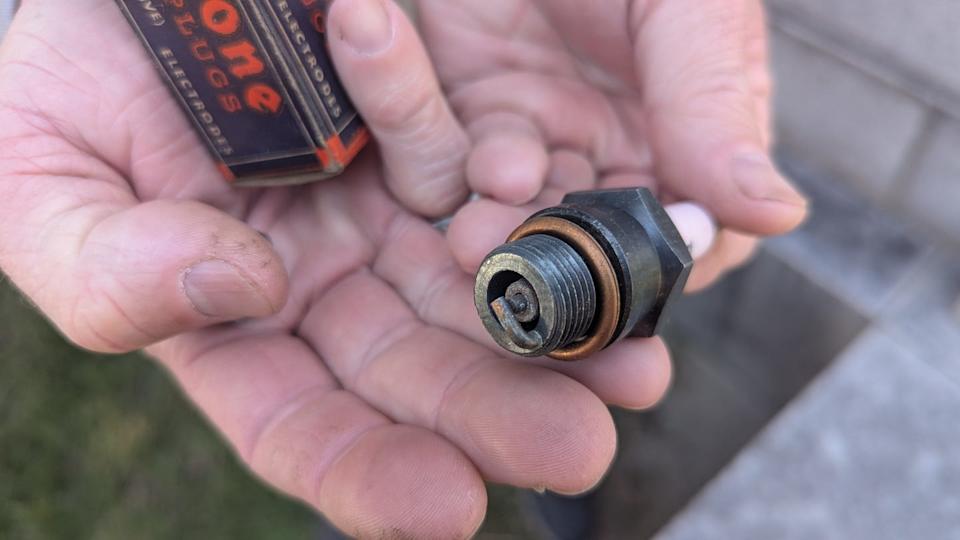
It turns out that three of the four plugs in the set were for the Model T, while one was a Model A plug.
In any case, the actual performance gain from polonium-enhanced electrodes would have been minimal at best; as soon as any kind of combustion deposits ended up on the electrode, they'd have stopped the alphas cold.
Not only that, but Po-210 has a half-life of just over 138 days, which meant the plugs would have had very limited service and shelf lives (after a year, around 84% of the polonium would have decayed into lead).
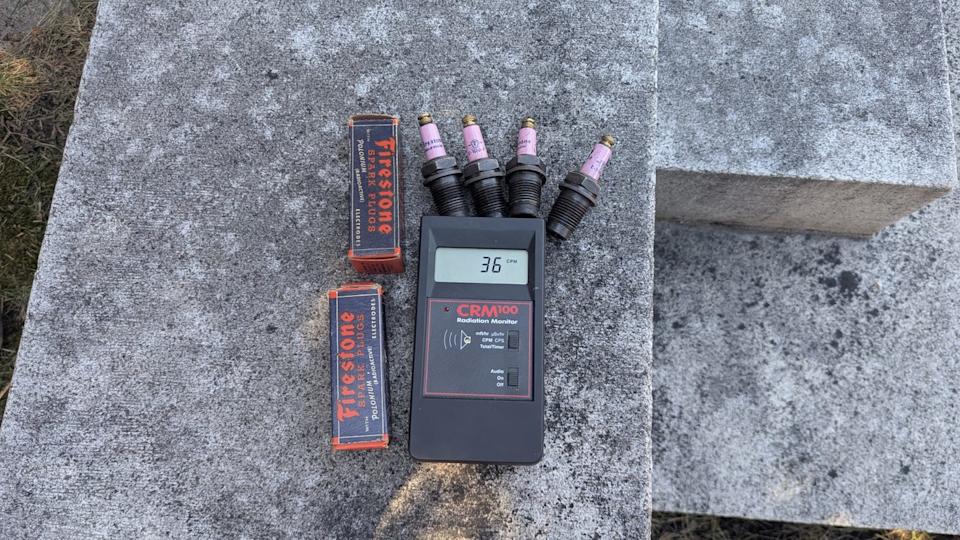
That merciless math means that whatever eensy speck of polonium was in these plugs to begin with is now down to an undetectable sprinkling of atoms.
I brought my Geiger counter anyway, placing the electrodes as close as they could get to its sensor. 36 cpm is slightly higher than typical Denver background radiation, but that's almost certainly due to the uranium content of this granite "Millionaire's Row" grave monument.







Comments